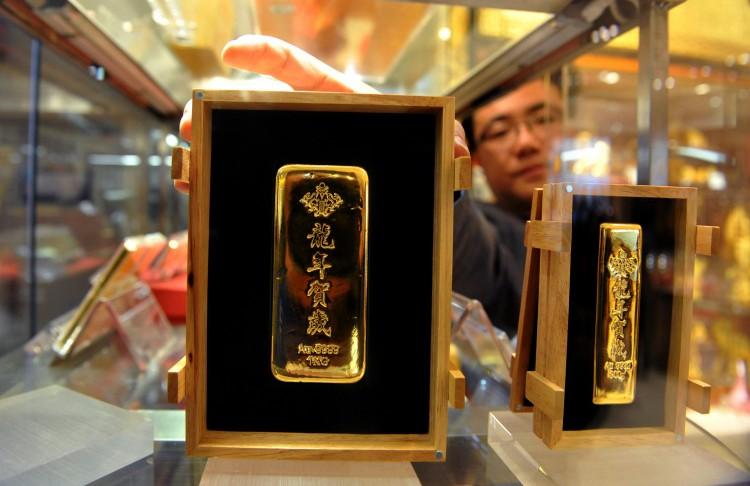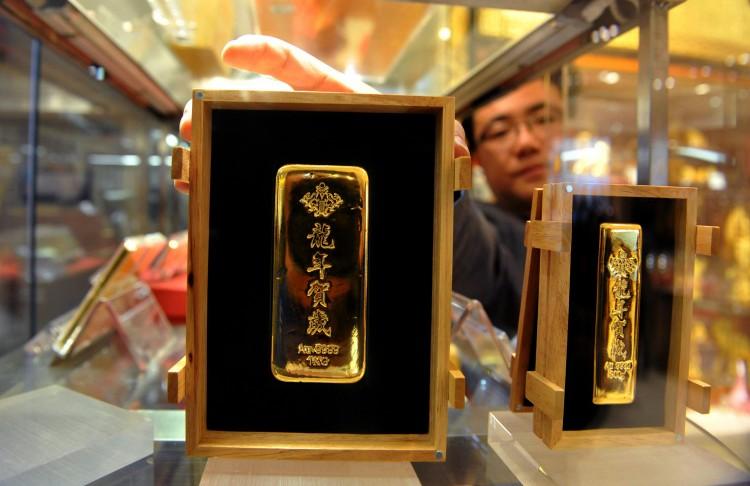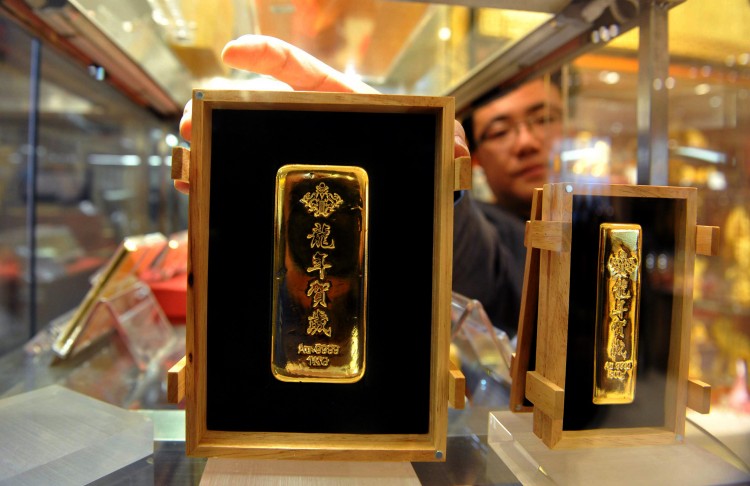Just about a little more than three months ago, Frank Holmes, CEO of U.S. Global Investors, predicted that based on careful evaluation of the gold investment market a 10 percent decrease of gold prices was imminent.
“Back on August 22, I wrote that gold was due for a correction and that it would be a non-event to see a 10 percent drop in gold,” Holmes said in an article published on the Advisor Perspectives website.
Holmes saw a decrease in gold prices as something inevitable, as institutional investors who had run into liquidity problems needed cash, so they sold their investments in gold. However, no information concerning gold sales by institutional investors could be found despite an exhaustive Internet search.
It was also said that the Italian government, having run into liquidity problems and having the world’s fourth largest hoard of gold [2,452 tonnes (metric tons), which equals 2,452,000 kg or 5.4 million pounds], might dip into its gold deposits to cover obligations, according to an article on Market Watch.
“The eurozone’s epic endeavor to conquer its sovereign debt issues forced some institutional investors to liquidate profitable gold positions to meet a rising need for liquidity. … This would actually be a healthy development for markets by shaking out the short-term speculators,” Holmes said.
Gold prices peaked at $1,752 per ounce on Dec.1 and then began to drop to $1,708 on Dec. 6. After a slight reprieve, when gold reached $1,735, gold prices kept sliding down to $1,574 by Dec. 15. The drop in gold prices got another reprieve, rising to $1,594 on Dec. 16 and to $1,598 at closing on Dec. 19, according to Kitco Metals Inc. historical data. Gold fell another $23, or 1.5 percent, on Thursday, closing at $1540 an ounce on the Comex division of the New York Mercantile Exchange. That marks the sixth straight session of declines.
Gold traders have remained calm although they “are keeping a close eye on two important factors in determining gold’s price near-term: physical demand and exchange-traded fund flows,” according to a Dec. 16 article on the Kitco website.
Despite the death of North Korea’s Kim Jong Il, gold markets remained relatively calm, not reacting to possible political changes that are difficult to assess.
“The market place did get a bit of a jolt overnight when news reports said North Korean leader Kim Jong Il had died. However, the market uncertainty was not extreme. The gold market is also presently trying to stabilize and consolidate recent losses,” according to a Dec. 19 article on the Kitco website.
Appraising Gold’s Future
“After a sharp drop in value this week, participants in Kitco News’ Gold Survey lean toward the bullish side, but that view is certainly not dominant,” according to Kitco survey results for the week ending Friday, Dec. 16.
The weekly gold survey, conducted by Kitco, suggested that 63.6 percent of 31 gold market experts were optimistic and 36.4 percent were pessimistic concerning gold future price changes.
“Gold prices could rise next week if futures prices can hold support at important technical levels and if the U.S. dollar’s recent rally slows or falters,” according to the Dec. 16 Kitco article.
Those expecting gold prices to soar again saw the drop in prices during the week of Dec. 12 as a sudden market aberration given the European political situation and the threat of a U.S. government shut down due to political haranguing.
“Fundamentals remain very positive for gold: easy money in the U.S. and Europe in particular; a lack of confidence in paper money and monetary authorities. … By no means is this the end of the bull market for gold,” said Adrian Day, president of Adrian Day Asset Management, an investment firm, in the Kitco article.
Those who are gloomier about the recovery of gold prices see them declining further as the dollar strengthens against the euro.
“Some commentators said they expect to see the September low in gold prices to be taken out, with a possible trip under $1,500 occurring,” according to the Kitco survey.
Next...Demand and Supply Part of the Gold Price Equation
Demand and Supply Part of the Gold Price Equation
“Gold demand in the third quarter of 2011 reached 1,053.9 tonnes, an increase of 6% compared to the same period last year. This equates to US$57.7bn, an all-time high in value terms,” according to a research article on the World Gold Council website.
Asian markets are driving the demand side of gold, with mainland China’s gold purchases up 50 percent in the fourth quarter of 2011.
“This is the fourth month of record imports into China. Chinese New Year, beginning January 23, presents a strong platform for further Chinese gold import records,” Holmes stated.
Gold prices are affected by the continued downfall of the euro’s value. “The euro slid to 1.297 against the dollar [on Wednesday], its lowest level since January,” according to a Dec. 14 article on the GoldAlert website.
In 2010, China’s regime, the world’s largest producer of gold for three years in a row, produced 345 metric tons, and according to the GoldSeek website, will increase annual production to 400 metric tons this year.
Australia, the world’s second largest producer, mined 255 metric tons of gold, and the United States has been mining about 230 metric tons annually since 2007.
“Gold production has increased by a factor of 2.1 from 1959 to 2010. At the same time, the world population has been multiplied by a factor 2.2. Thus we produced more or less the same amount of gold per inhabitant as in 1959,” stated an article on the GoldSeek website.
Analyzing Market Fundamentals
“When the federal government is spending more than it takes in, gold and gold stocks tend to outperform the broader market. … It’s the political policies, not political parties that drive this phenomenon,” said Holmes in the US Global Investors article.
In the 1990s, during President Clinton’s watch, a budget deficit was unheard of. Investors earned a high return by investing in Treasury bills. There was no reason to buy any type of commodities, including gold, which averaged around $350 per ounce annually.
The federal budget deficit for the U.S. fiscal year 2011 was $1.3 trillion, and the 2011 “deficit was the third-largest shortfall in the past 40 years,” according to the Congressional Budget Office website.
The U.S. budget deficit was one of the reasons gold prices rose above the $1,000 level. In 2000, there was a budget surplus of $86 billion. In 2001, there was a budget deficit of $32 billion, and by 2009, the budget deficit had more than doubled to $1.5 trillion.
Gold prices started to rise in 2002, with the annual average at $332 per ounce. From 2002, average gold prices increased steadily, going to about $1,000 per ounce in 2009.
Other reasons for gold price fluctuations are the supply or demand for gold and the value of the U.S. dollar in international markets. When the dollar strengthened against the euro, gold prices began to drop.
“If gold is higher in US Dollars while at the same time cheaper in every other currency, then we can conclude that the US Dollar has weakened, and that gold has actually lost value in all other currencies,” according to an article on the Kitco website.






